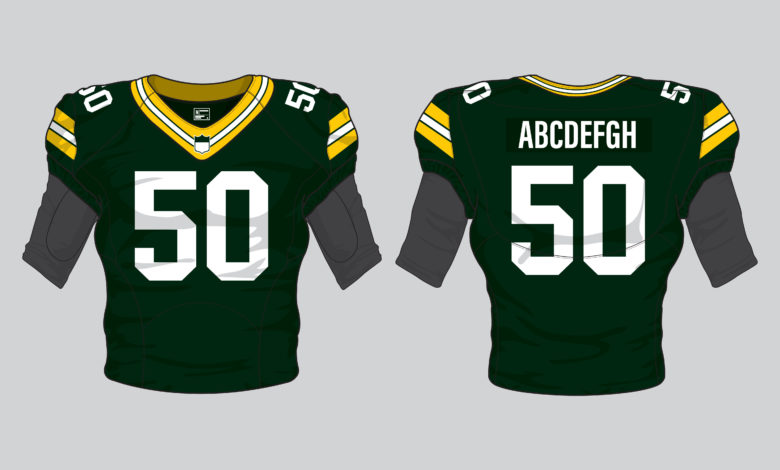
Heat transfers are one of the best ways to decorate team uniforms in the team sports market. One of the many advantages of using heat transfers is gang runs. Gang runs add extra graphics that use the same colors as your production run. T-shirts, hoodies, hats, seat cushions, and flags are just a few items you might want to consider implementing alongside the team uniforms. Embellishment can be achieved with screen-printed transfers, heat transfer vinyl (HTV) transfers, or even heat applied appliqué transfers.
Heat pressing sports jerseys can be difficult if you don’t know what to look for in a garment or a heat transfer. The first thing to consider is the substrate/material contents. Most garments used in the team sports market are made out of polyester or using a high content of polyester, blended with materials such as cotton, nylon, or lycra/spandex. These garments tend to be heat sensitive, and dye migration can become a big problem if the garment is not appropriately tested before production. There are products available to protect your garment from scorching when fusing a heat transfer, as well as low-temperature transfers.
When pressing a transfer on to a garment with dye migration issues, make sure you use a transfer that has dye-blocking capabilities. There are a variety of these products available to purchase through your custom heat transfer manufacturer. Some fabrics can be almost impossible to block the dye from migrating through the transfer once applied. Testing before production is critical, and there are three tests to undertake when decorating sports jerseys.
- Test to see how sensitive your garment is to heat: The best way to see if your garment will scorch is to flip the shirt inside out and place the inside seam facing up with part of the shirt seam hanging off the lower platen and press at the temperature, time, and pressure you will be fusing your transfer. Compare the portion of the shirt on the lower platen with the part hanging off the press. If there is a difference in the surface of the fabric, then you will want to look into a low-temp application transfer or using cover sheets to protect the fabric.
- Test for dye migration: For reliable results, the easiest way of testing for dye migration is to apply two of the desired heat transfer to the garment that will be used. Keep the first applied graphic in a regular office/shop climate and incubate the second at a minimum of 150 F for 24 hours. If the dye is going to bleed through the transfer, it will likely happen in that 24-hour incubation period. After the test is finished, compare the two swatches, and if the swatch that has been in incubation has not bled, you most likely will not have to worry about dye migration. It is always good to wait a few days after this test to review the results a second time. If the transfer does sublimate, you will need to find a transfer product that is designed to block dye migration.
- Test for wash fastness: To ensure a strong bond is made after applying a heat transfer to a garment, wash testing is the best way to see how durable your transfer is once applied. Wait 24-48 hours after heat pressing the transfer before putting it in the washing machine. One high-temp wash should show you what you need to know. The whites setting on your washing machine should suffice for a home wash test. You want the temperature to go up to at least up to 140 F for a dwell time of 1.5-2 hours. Then place the shirt in the dryer for one hour on the hottest setting. If the transfer holds up to your standards after the wash test, you have a compatible transfer for your garment.




